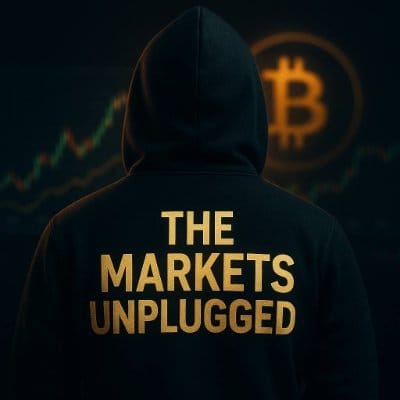Legal & Risk Notice
This guide is for education only… not financial, investment, legal, accounting, or tax advice. Nothing here is a recommendation to buy, sell, or use any product or service. Cryptoassets are high risk… prices can go to zero… only use amounts you can afford to lose. Availability and legality vary by country… check your local rules before acting. You are responsible for your own decisions.
TL;DR
- Route smart… prefer same-network swaps, avoid unnecessary bridges, and split size if liquidity is thin.
- Climb fee tiers… maker orders and verified volume tiers usually beat taker clicks… zero-fee pairs aren’t always cheapest once spread and slippage hit.
- Time it… trade when gas is calm and volatility lower… batch actions… and use L2s where it makes sense.
What you’ll learn
- Where fees really come from… venue fees, spread, slippage, network gas, and bridges.
- A routing play that avoids paying twice for the same move.
- A simple timing routine to keep more of each trade.
Introduction
Fees hide everywhere… in the quoted price, the route you choose, the time you click, and the venue’s tier you’re on. You don’t need tricks… just a boring process that you run every time. Do that and your all-in cost drops quietly.
Where fees come from

- Venue fees… maker and taker on exchanges… wallet swap fees on in-app routes.
- Spread and slippage… the gap between best bid and ask… plus what you lose for pushing size through thin books.
- Network gas… paid to the chain… rises with demand and priority settings.
- Bridges… protocol fee plus gas on both chains… often the priciest part of a “simple” cross-chain move.
- Fiat rails… card processing and on-ramp spreads… fast but rich.
Routing… the clean way
- Stay same-network if you can… swapping SOL↔USDC on Solana or ETH↔USDC on an L2 is usually cheaper than hopping chains.
- Use liquid paths… route via a deep intermediate if the direct pair is illiquid… e.g., Token ↔ USDC ↔ Target, not Token ↔ Target in a dead pool.
- Split big orders… two or three clips often slip less than one big hit.
- Compare aggregator vs direct pool… sometimes the single deepest pool beats the multi-hop route the aggregator prefers.
- Bridges last… only bridge when you must… and move stablecoins rather than exotic tokens to cut failure risk and fees.
- Mind approvals… on EVM, set spend caps for each token rather than unlimited… fewer nasty surprises.
Quick routing checklist
- Same network… deepest pool… slippage cap set… simulate or dry run tiny first.
Tiers… maker beats taker

- Maker orders… placing limits that rest on the book usually cost less than hitting market.
- Volume tiers… many venues cut fees as your trailing 30-day volume grows… concentrate flow rather than scattering across five accounts.
- Zero-fee pairs… check spread and slippage… a wide market can cost more than a low-fee pair with tight books.
- KYC and limits… higher tiers often require verification; finishing KYC can unlock cheaper rails and bigger caps.
Tier checklist
- Enable maker by default… route size to one main venue… verify the account to unlock better caps.
Timing… gas and volatility matter

- Gas windows… schedule on-chain moves when the network is quieter… your wallet’s quote will show lower gas without touching anything else.
- Batch actions… queue approvals and small transfers in one calm window rather than drip-feeding during spikes.
- Volatility filter… wide candles mean fatter spreads and worse slippage… wait for range to tighten if you’re not in a rush.
- Use L2s… for EVM activity that doesn’t require mainnet settlement, L2s cut gas dramatically.
- Avoid “just before the news”… spreads widen and routes get messy… be early or be late.
Timing checklist
- Check gas… check spread… avoid obvious event windows… batch what you can.
Step-by-step… the low-cost playbook
- Define the goal… do you truly need to switch chains or just rotate tokens on the same chain.
- Price it two ways… aggregator route vs deepest single pool… keep the cheaper all-in.
- Set slippage… tight but realistic… widen only if liquidity is proven.
- Clip the order… split size in two or three fills if depth is thin.
- Pick the right rail… same-network first… bridge only stablecoins if you must cross.
- Choose maker where possible… especially for larger tickets on exchanges.
- Schedule the click… low-gas window… calmer tape.
- Test withdrawal… a small outbound confirms the full round-trip before scaling up.
Common mistakes
- Paying twice… swapping on one chain then bridging the result when you could have bridged the stablecoin once.
- Unlimited approvals… convenient now, expensive later… set caps.
- Chasing zero-fee banners… tight books beat “free” with a 1% spread.
- Trading into gas spikes… you saved 0.1% on venue fees and gave back 0.4% to the network.
- Bridging illiquid tokens… higher failure risk and messy quotes… move stables instead.
Mini FAQ

Maker vs taker… which is “worth it”?
Maker wins for larger tickets and calmer markets… taker is fine for small size when spreads are tight.
How tight should my slippage be?
Start tight… widen in small steps only after you confirm pool depth or book thickness.
When does bridging make sense?
When the opportunity or use case is only on the other chain… and the edge covers bridge fee plus two sets of gas.
Do L2 savings always beat mainnet?
For routine EVM activity, yes… but if final settlement must be on mainnet, account for the eventual bridge cost back.
What to read next
- Fiat→Crypto quick guide… on-ramp options, KYC, and region notes.
- UK on-ramps compared… bank vs card vs Faster Payments.
- US on-ramps compared… ACH vs debit vs P2P.
- Phantom Fees & Limits… how wallet swap, bridge, and gas fees show up after you fund.
If this shaved your costs… join Alpha Insider for safer routing playbooks, cross-venue comparisons, and weekly timing windows. Fewer mistakes… cleaner execution… more conviction.
Accuracy & Updates
Fees, limits, and features change often. Always verify the latest details in-app or on the provider’s site before you transact. We do not guarantee completeness or accuracy… use at your own risk.















Discussion